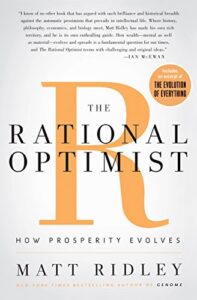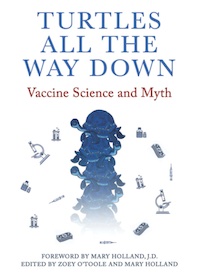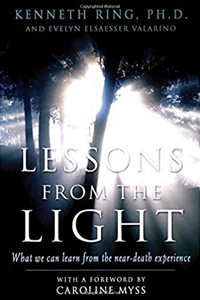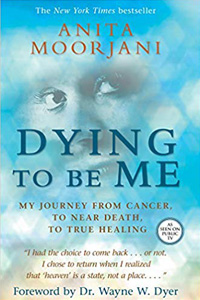Excerpt From Matt Ridley’s The Rational Optimist:
“This should not need saying, but it does. There are people today who think life was better in the past. They argue that there was not only a simplicity, tranquility, sociability and spirituality about life in the distant past that has been lost, but a virtue too. This rose-tinted nostalgia, please note, is generally confined to the wealthy. It is easier to wax elegiac for the life of a peasant when you do not have to use a long-drop toilet. Imagine that it is 1800, somewhere in Western Europe or eastern North America. The family is gathering around the hearth in the simple timber-framed house. Father reads aloud from the Bible while mother prepares to dish out a stew of beef and onions. The baby boy is being comforted by one of his sisters and the eldest lad is pouring water from a pitcher into the earthenware mugs on the table. His elder sister is feeding the horse in the stable. Outside there is no noise of traffic, there are no drug dealers and neither dioxins nor radioactive fall-out have been found in the cow’s milk. All is tranquil; a bird sings outside the window.
 “Oh Please! Though this is one of the better-off families in the village, father’s Scripture reading is interrupted by a bronchitic cough that presages the pneumonia that will kill him at 53 – not helped by the wood smoke of the fire. (He is lucky: life expectancy even in England was less than 40 in 1800.) The baby will die of smallpox that is now causing him to cry; his sister will soon be chattel of a drunken husband. The water the son is pouring tastes of the cows that drink from the brook. Toothache tortures the mother. The neighbour’s lodger is getting the other girl pregnant in the hay shed even now and her child will be sent to an orphanage. The stew is grey and gristly yet the meat is a rare change from gruel; there is no fruit or salad at this season. It is eaten with a wooden spoon from a wooden bowl. Candles cost too much, so firelight is all there is to see by. Nobody in the family has ever seen a play, painted a picture or heard a piano. School is a few years of dull Latin taught by a bigoted martinet at the vicarage. Father visited the city once, but travel cost him a week’s wages and the others have never travelled more than fifteen miles from home. Each daughter owns two wool dresses, two linen shirts and one pair of shoes. Fathers’ jacket cost him a month’s wages but it is now infested with lice. The children sleep two to a bed on straw mattresses on the floor. As for the bird outside the window, tomorrow it will be trapped and eaten by the boy.
“Oh Please! Though this is one of the better-off families in the village, father’s Scripture reading is interrupted by a bronchitic cough that presages the pneumonia that will kill him at 53 – not helped by the wood smoke of the fire. (He is lucky: life expectancy even in England was less than 40 in 1800.) The baby will die of smallpox that is now causing him to cry; his sister will soon be chattel of a drunken husband. The water the son is pouring tastes of the cows that drink from the brook. Toothache tortures the mother. The neighbour’s lodger is getting the other girl pregnant in the hay shed even now and her child will be sent to an orphanage. The stew is grey and gristly yet the meat is a rare change from gruel; there is no fruit or salad at this season. It is eaten with a wooden spoon from a wooden bowl. Candles cost too much, so firelight is all there is to see by. Nobody in the family has ever seen a play, painted a picture or heard a piano. School is a few years of dull Latin taught by a bigoted martinet at the vicarage. Father visited the city once, but travel cost him a week’s wages and the others have never travelled more than fifteen miles from home. Each daughter owns two wool dresses, two linen shirts and one pair of shoes. Fathers’ jacket cost him a month’s wages but it is now infested with lice. The children sleep two to a bed on straw mattresses on the floor. As for the bird outside the window, tomorrow it will be trapped and eaten by the boy.
“If my fictional family is not to your taste, perhaps you prefer statistics. Since 1800, the population of the world has multiplied six times, yet average life expectancy has more than doubled and real income has risen more than nine times. Taking a shorter perspective, in 2005, compared with 1955, the average human being on Planet Earth earned nearly three times as much money (corrected for inflation), ate one-third more calories of food, buried one-third as many of her children and could expect to live one-third longer. She was less likely to die as a result of war, murder, childbirth, accidents, tornadoes, flooding, famine, whooping cough, tuberculosis, malaria, diphtheria, typhus, typhoid, measles, smallpox, scurvy or polio. She was less likely, at any given age, to get cancer, heart disease or stroke. She was more likely to be literate and to have finished school. She was more likely to own a telephone, a flush toilet, a refrigerator and a bicycle. All this during a half-century when the world population has more than doubled, so that far from being rationed by population pressure, the goods and services available to the people of the world have expanded. It is, by any standard, an astonishing human achievement.
“Averages conceal a lot. But even if you break down the world into bits, it is hard to find any region that was worse off in 2005 than it was in 1955.”
……………
The Jordan B. Peterson Podcast – Season 4 Episode 4: Matt Ridley: Rational Optimism
Excerpts:
“The typical middle class person in North America or Europe, and increasingly, anywhere in the world, is wealthier, by almost any measure, than a billionaire was in 1920.”
…
“The evidence, as far as I can tell, is clear: as soon as you make people rich enough so that they are not living hand-to-mouth, then they start to become concerned with environmental degradation. So the biggest contributor to pollution — you could make a case, a strong case — that the biggest contributor to pollution isn’t wealth, but poverty. And if you raise people out of poverty, then they start to manage their environments properly because they can afford to look at the long run. So you would think that for the radical types that are hyper concerned according to their own self description with poverty and oppression, as well as environmental degradation, that they would look at the facts and say, ‘Oh my God, we can have a cake and eat it too!’ The faster we make people rich, the better off the planet is going to be.”
…
“There is a huge population of young, and not-so-young people, who are metaphorically starving, psychologically starving for a positive, but believable story. We could decry the state of modern politics and concern ourselves with the fact that counterproductive economic and social policies might be put in place for all sorts of ideological reasons, but I actually think a much better use of our time is . . . to produce a robust counter narrative that is thoroughly grounded in the facts. We can say forget about the pessimism . . . we can make the assumption that we can have our cake and eat it too. We can eradicate poverty. We can constrain relative inequality to the point where our societies are stable. We can produce a massive increment in environmental quality. And all that’s within our grasp, if that’s what we want, within the next hundred years.”
……………..
The Rational Optimist: How Prosperity Evolves (2010)
By Matt Ridley
Amazon Description:




Yet Matt Ridley does more than describe how things are getting better. He explains why. Prosperity comes from everybody working for everybody else. The habit of exchange and specialization — which started more than 100,000 years ago — has created a collective brain that sets human living standards on a rising trend. The mutual dependence, trust, and sharing that result are causes for hope, not despair.
This bold book covers the entire sweep of human history, from the Stone Age to the Internet, from the stagnation of the Ming empire to the invention of the steam engine, from the population explosion to the likely consequences of climate change. It ends with a confident assertion that thanks to the ceaseless capacity of the human race for innovative change, and despite inevitable disasters along the way, the twenty-first century will see both human prosperity and natural biodiversity enhanced. Acute, refreshing, and revelatory, The Rational Optimist will change your way of thinking about the world for the better.
……………..
How Innovation Works: And Why It Flourishes in Freedom (2020)
By Matt Ridley
Amazon Description:


Innovation is the main event of the modern age, the reason we experience both dramatic improvements in our living standards and unsettling changes in our society. Forget short-term symptoms like Donald Trump and Brexit, it is innovation that will shape the twenty-first century. Yet innovation remains a mysterious process, poorly understood by policy makers and businessmen alike.
Matt Ridley argues that we need to see innovation as an incremental, bottom-up, fortuitous process that happens as a direct result of the human habit of exchange, rather than an orderly, top-down process developing according to a plan. Innovation is crucially different from invention, because it is the turning of inventions into things of practical and affordable use to people. It speeds up in some sectors and slows down in others. It is always a collective, collaborative phenomenon, involving trial and error, not a matter of lonely genius. It happens mainly in just a few parts of the world at any one time. It still cannot be modeled properly by economists, but it can easily be discouraged by politicians. Far from there being too much innovation, we may be on the brink of an innovation famine.
Ridley derives these and other lessons from the lively stories of scores of innovations, how they started and why they succeeded or failed. Some of the innovation stories he tells are about steam engines, jet engines, search engines, airships, coffee, potatoes, vaping, vaccines, cuisine, antibiotics, mosquito nets, turbines, propellers, fertilizer, zero, computers, dogs, farming, fire, genetic engineering, gene editing, container shipping, railways, cars, safety rules, wheeled suitcases, mobile phones, corrugated iron, powered flight, chlorinated water, toilets, vacuum cleaners, shale gas, the telegraph, radio, social media, block chain, the sharing economy, artificial intelligence, fake bomb detectors, phantom games consoles, fraudulent blood tests, hyperloop tubes, herbicides, copyright, and even life itself.
……………..
The Origins of Virtue: Human Instincts and the Evolution of Cooperation (1998)
By Matt Ridley
Amazon Description:


……………..
Is Modern Society In Decline?
By David H. Bailey
ScienceMeetsReligion.org
January 2, 2021
Original Article, Including Extensive References
Introduction
It is widely believed that modern society is in sharp decline. Among the ills cited are skyrocketing rates of crime, divorce, teenage sex, teenage births and drug abuse; war; and a general decline in personal morality and religiosity. There is also concern that modern science and technology is leading to a widening of the gap in living conditions and educational opportunities between prosperous first-world nations and impoverished third-world nations. Such concerns are raised by both the secular left and the religious right.
Religious fundamentalists frequently pin the blame on modern science in general, and on evolution in particular. For instance, at the Creation Museum in Petersburg, Kentucky (a suburb of Cincinnati, Ohio), one display, warning of the consequences of a scientific worldview, features photos of a nuclear explosion, a collection of skulls from the Holocaust, and what may be a photo of a woman undergoing an abortion. Another exhibit in the museum, named “Graffiti Alley,” displays news clips about birth control, abortion, divorce, mass murder, stem cells and war. For additional details, see Decline-Blame.
Not to be out-done, numerous secular writers blame religion. Christopher Hitchens declares that religion is “violent, irrational, intolerant, allied to racism, tribalism, and bigotry, invested in ignorance and hostile to free inquiry, contemptuous of women and coercive toward children”. These writers highlight, among other things, the numerous wars fought in Europe and elsewhere in the name of religion. For additional details, see Atheists and Decline-Blame.
So what are the real facts here?
Some genuine examples of decline
There definitely are some aspects of society today that most observers agree represent decline, or at least areas that need further study and assistance:
1 – Out-of-wedlock births and single-parent households. In the U.S., the percentage of children born out of wedlock has risen from just 10.7% in 1970 to 41% in 2017. These figures are just as high in certain nations of Western Europe, although the European rates now appear to have topped out and are starting to decline. By contrast, only 2% of children in Japan are now born out of wedlock. Along this line, significantly more couples are living together unmarried than in decades past. Educational level is a major factor here. Fully 70.7% of women aged 30-50 with four years of college are currently married, versus only 53.5% of those without a high school diploma. What’s more, 78% of women who are college-educated when they are married are likely to be married 20 years later, versus only 40% of women who have a high school education or less.
2 – Internet fraud and “addiction”. At least 60% of email is now spam, much of which is utterly fraudulent. Many youth and young adults devote huge amounts of time to Internet-based distractions. Internet porn is also an issue. Many employers in the U.S. and elsewhere prohibit employees from viewing porn on the job, since such material is widely regarded as sexist and time-wasting, and have terminated repeat offenders. A 2016 study found that divorce rates double when one of the partners starts watching porn.
3 – Environmental degradation. According to the latest report by the Intergovernmental Panel on Climate Change, the fact that the Earth is warming, and that human activity is the primary cause of this warming, is now well beyond reasonable doubt. If anything, it now appears that the scientific community has somewhat underestimated the pace of change. One particularly worrisome trend, out of many that could be cited, is the higher-than-anticipated rate of glacier melting, such as in Greenland, since this means coastal flooding and storm surges are bound to be even more devastating worldwide than originally forecast. Another significant environmental concern is the accelerating rate of species extinction, in part due to climate change but also due to other human activities. Thousands of species, including iconic species such as the African mountain gorilla and the Bengal tiger, are on the brink of extinction.
It is particularly galling to see certain religious groups, which by any objective standard should have a great reverence for the grandeur of the natural world, actually leading the way in skepticism and lack of concern regarding these changes. For example, according to a recent study by Pew Research Center, 37% of white evangelical Christians and 33% of white mainline Protestants (compared with 25% of U.S. adults overall) assert that there is no solid evidence that Earth is becoming warmer. What’s more, 47% and 43%, respectively, claim that scientists are not in agreement that Earth is becoming warmer. Such views are, of course, utterly mistaken, since at least 97% of the climate science community agrees that not only is the Earth becoming warmer, but further that human activity is the primary cause. These negative attitudes towards the scientific consensus in this area are a huge blemish on the American religious world in general and on these particular communities in particular.
Other statistics: Where is the decline?


1 – Crime. It is widely believed that crime, from minor burglary to serious violent offenses, is spiraling out of control. Yet the facts point in quite the opposite direction. According to the latest FBI report (dated 2019, covering the year 2018), the U.S. violent crime rate was 368.9 per 100,000, which is down 51% from 1991, and the U.S. robbery rate was 86.2 per 100,000, which is down 68% from 1991. In New York City, for example, from 1991 to 2018, the homicide rate dropped by 90% to a rate of 3.31 per 100,000, the lowest rate in 50 years; burglary and auto theft rates have also dropped by similar percentages. In Los Angeles, the crime rate ticked up from 2013 through 2017, but then dropped back down in 2018 to the previous record-low levels; homicides, for instance, are down 75% from 1991. There has been an uptick in a few U.S. cities (e.g., Chicago and Baltimore) in recent years, but crime continues to fall in most others. This is not just an American phenomenon — crime has dropped so much in Western Europe that the Economist asked “Where have all the burglars gone?”.
This decline in crime has confounded criminologists. While some of this decline may be due to demographic factors (fewer 16- to 24-year-olds), crime continues to fall in some areas where this age bracket has recently started to grow again. Others have suggested that the legalization of abortion in the 1970s has reduced crime, but crime rates have continued to fall in the U.S. long after the post-Roe-vs-Wade cohort passed through the 16- to 24-year-old age bracket, and they have also fallen in Canada and the U.K., where abortion was legalized long ago. Better policing and law enforcement may be helping, but again cannot be more than a partial explanation. Harvard social scientist Steven Pinker argues that people worldwide, especially in major first-world nations, are becoming fundamentally more averse to crime, especially violent crime (see Violence for additional discussion).
2 – Life expectancy. Life expectancy in Europe and America hovered around 35 for over two centuries, before soaring, starting about 1880, to over 80 at the present time. Worldwide, life expectancy has soared from 29 in 1880 to 71 today. Along this line, infant mortality has plunged from 25% in much of Europe as recently as the late 1800s, to a fraction of a percent today. Similar precipitous declines have recently been seen in numerous other nations, including the poor regions in southeast Asia and sub-Saharan Africa. Along this line, suicide has dropped almost everywhere worldwide in the past 20 years, with the glaring exception of the U.S. where there has been a slight increase.
3 – Disease. As recently as the early 1900s, epidemics repeatedly ravaged populations around the world, striking down hundreds of millions, both rich and poor. But within the past century disease after disease has been either eradicated or enormously reduced, thanks to research, vaccines and better medical care. These include smallpox (eradicated in 1977), polio (only 37 cases remain) and Guinea worm (only 25 cases remain). Others likely to be eradicated in the next decade include elephantiasis, river blindness, blinding trachoma, measles, rubella, sleeping sickness and hookworm. Deaths by malaria have fallen 60% since 2000, and WHO workers hope to reduce this by another 90% by 2030.
4 – Malnourishment. Throughout history, waves of famine have decimated societies worldwide, with hundreds of millions of victims, and hundreds of millions more have suffered from malnourishment. As recently as 1870, the number of worldwide famine deaths per 100,000 was 1400; today it is virtually zero. Similarly, in spite of widespread dire predictions by writers such as Paul Ehrlich in the 1960s that the world would soon face mass starvation, the percentage of people in the developing world who are undernourished has declined from 35% in 1970 to 15% today, and further reductions are all but certain in the decades ahead as scientific agriculture continues to advance.
5 – Poverty. China and India, each with over one billion persons, have now achieved the same per-capita income that Sweden had in the mid-20th century, thanks in part to the “great convergence,” namely the phenomenon of poorer countries advancing faster than richer ones. More importantly, the number of persons worldwide living in extreme poverty ($1.90 income per person per day or less in inflation-adjusted 2014 dollars) has dropped from 90% a century or two ago to just 10% today, and every day the number of persons in that category drops by a whopping 137,000.
6 – Economic inequality. Inequality remains a major challenge, particularly in the U.S. and elsewhere where there has been a hollowing out of lower-skilled jobs. This certainly merits much more study and effort to deal with, particularly in light of looming advances in robotics and artificial intelligence (see below). But thanks to various social programs in nations worldwide (which are much more extensive than in prior decades and centuries), the impact of this income inequality has been greatly reduced. For example, in terms of consumption, the number of U.S. poor has declined 90% since 1960, from 30% of the population to just 3%. It is also important to note that on the worldwide stage, inequality has actually been decreasing — poorer nations are rapidly catching up to their first-world peers.
7 – Environment. As mentioned above, at present there are some serious environmental challenges facing our society, including climate change and species extinction. How society deals with these issues will certainly be a defining judgement on our times. On the other hand, there are some brights spots that should be mentioned: the proportion of the world that drinks tainted water has fallen by 60% since the mid-20th century; five key atmospheric pollutants have been reduced by an average of 50%; and annual deforestation, which was soaring in the 20th century, has now fallen by nearly 70%.
8 – Peace. It is certainly true that World War I and World War II had the most wartime fatalities in history. But when normalized by world population at the time, they do not even make the top eight — they are merely “blips” on a declining trajectory. According to Harvard scholar Steven Pinker, “violence has been in decline over long stretches of time, and we may be living in the most peaceful time in our species’ existence. … [I]t’s a persistent historical development, visible on scales from millennia to years, from the waging of wars and perpetration of genocides to the spanking of children and the treatment of animals.” Pinker documents this phenomenon in detail in his 2011 book The Better Angels of Our Nature: Why Violence Has Declined.
9 – Status of women. In 1964, only 9% of American women aged 25-29 had at least a bachelor’s degree, but by 2013, 37% of women had at least a bachelor’s degree, a significantly higher percentage than that of men (30%). Women are also more likely to continue education after the bachelor’s degree. In 2012, American women earned 60% of all master’s degrees (up from 46% in 1977), and earned 51% of all doctorates (up from 21% in 1977). On the other hand, it is clear that much remains to be done. In 2012, median hourly earnings for women 16 and up were 84% of men. Even more importantly, in 2014 only 5.2% of Fortune 500 CEOs were women, and in 2013, only 16.9% of Fortune 500 board seats were held by women. And as recent news has made clear, millions of women suffer sexual harassment and discrimination in the work place: in 2017, 22% of employed American women report at least one incident of harassment, and 42% report at least some form of discrimination (earned less than someone doing the same job, treated as if they were not competent, received less support from management, passed over for important assignments, etc.).
10 – Race relations. The recent headlines of racial incidents mask the broader trend downward over time. In 1940, 60% of American black women worked as domestic servants; by 1998 the figure was only 2.2%. In 1958, 44% of American whites said they would move if a black family became a next-door neighbor; by 1998 the figure was only 1%. In 1964, only 18% of American whites had at least one friend or colleague who was black; by 1998 the figure was 86%. On the other hand, there are indications that progress has stalled. In 1967, American black household income was only $24,700, compared with $44,700 for whites (i.e., only 55.3% of whites). In 2014, the figures were $43,300 for black households and $71,300 for whites (i.e., only 60.7%), only a minor improvement. The net worth of white households, as of 2014, was roughly 13 times that of black households. Recent revelations of violence against racial minorities by law enforcement officers have compounded these problems. Thus it is clear that there is much to be done here.
11 – Education, work and family life. Worldwide literacy has increased from 20% two centuries ago to 80% today, and the figure is rapidly rising. The same is true for basic education — in every nation for which reliable data are available, the average years of child schooling has increased from 1980 to the present, dramatically in many cases. The average years of schooling in Cambodia today (four) is comparable to that of the U.S. in 1900. Average working hours are decreasing worldwide, and average leisure time is increasing. By and large, jobs available today are significantly more interesting and fulfilling than in years past. Many yearn for the “good old days” of the mid-20th century when parents spent more time with children, but this too is an illusion. In 1924, only 45% of American mothers spent two or more hours with their children every day; by 1999, 71% did. In 1924, only 60% of fathers spent one or more hours; by 1999, 83% did. Today, both single and working mothers spend more time with their children than stay-at-home mothers did in 1965.
12 – Divorce. Many bemoan soaring rates of divorce as evidence for a breakdown of the family, but here too the facts say something different. In the U.S., the divorce rate per thousand people peaked in 1981, and has declined ever since, even if one normalizes by the number of married couples. For example, from 2008 to 2016, the overall divorce rate dropped 18%, largely due to the fact that millennials (born 1980-2000) are divorcing at much lower rates than in previous eras; by comparison, from 1990 to 2015 the divorce rate actually doubled for persons aged 55-64, and increased even more for those over 65. Because of these demographic factors, the U.S. divorce rate is likely to continue declining for the foreseeable future. As a November 2014 New York Times article concluded, “Despite hand-wringing about the institution of marriage, marriages in this country are stronger today than they have been in a long time.”.
13 – Marital infidelity. While many decry the perceived decline in marital fidelity in today’s indulgent society, the results of research studies again point in a different direction. For example, in a 2013 Gallup poll, the percentage of Americans who agreed that “Married men and women having an affair” is morally acceptable actually declined from 7% in 2001 to 6% in 2013. In fact, marital infidelity ranked last in the poll in moral acceptability — lower than human cloning, suicide and polygamy. In a separate study conducted in 2012 by the National Opinion Research Center at the University of Chicago, the percentage of Americans saying that sex with a person other than one’s spouse is “always wrong” or “almost always wrong” rose from 84.0% in 1973 to 91.9% in 2012. Reliable statistics on how much infidelity actually happens are harder to come by, but even here the results are clear. In the latest data from the General Social Survey, while 20% of married Americans 55 and up report indiscretions, only 14% of those aged 19-55 report any; thus almost certainly the overall rates will further decline as the 55+ age cohort further increases in age.
14 – Teenage sex, birth and abortion. It is widely believed that teenage sex and birth rates are exploding out of control. Yet according to the U.S. Centers for Disease Control and Prevention (CDC), U.S. teen birth and abortion rates have all reached record lows (spanning four decades). In 2018, the birth rate for women aged 15-19 dropped to 17.4 births per 1000 women, down more than 70% from the rate (61.8 per 1000 women) in 1991, when the rates peaked. Similarly, in 2014 there were only 6.7 abortions per 1000 women 15-19, which is down by 70% since 1992. Along this line, according to a 2017 report from the CDC, the percentage of high school students who have had sexual intercourse in the past three months has declined from 38% in 1991 to just 30% (2015 data); the percentage who have ever had intercourse has declined from 54% to 39.5% (2017 data); and the percentage who have had sex with four or more persons has plummeted from 18.7% to just 9.7%. See also “Abortion” below.
15 – College campus “hookup” culture. Many decry a “hookup” culture on college campuses. Yet a study published in August 2013 found that the percentage of college students who reported having sex at least weekly in the past year declined slightly (from 65.2% in 1988-1996 to 59.3% in 2002-2010), as did the percentage who reported having more than one partner in the previous year (from 31.9% to 31.6%). These researchers concluded, “Our results provide no evidence that there has been a sea change in the sexual behavior of college students or that there has been a significant liberalization of attitudes towards sex.” To the contrary, there are indications that fewer young people are interested in casual or promiscuous sex.
16 – Abortion. As mentioned above, teen abortions are down significantly. This is actually true across all age groups. According to a 2018 report by the U.S. Centers for Disease Control and Prevention, as of 2015 the abortion rate has dropped to only 11.8 per 1000 U.S. women aged 15-44, a new record low. What’s more, it is also not true, as many presume, that the percentage of all abortions due to teenagers (aged 15-19) is increasing. Instead, the fraction has declined — in 2015, women aged 15-19 years accounted for only 9.8% of all abortions, whereas in 1991, 20.4% of all abortions were in this age bracket. A separate study by the Guttmacher Institute found that in 2017 the abortion rate had declined to 13.5, which is the lowest rate in their tabulations since abortion was legalized in 1973.
17 – Teenage alcohol, cigarette and drug use. Here again, the latest facts differ sharply from public perception. A 2017 University of Michigan report found that only 19.7% of 10th graders had used alcohol in the past month, down from from 42.8% in 1991 and 41.0% in 2000; and that only 8.9% had been drunk, down from 20.5% in 1991 and 23.5% in 2000. Even more dramatic declines have been seen in teen smoking: only 5.0% of 10th graders had smoked in the past month, down from 20.8% in 1991 and 23.9% in 2000. Cocaine and crack usage have also declined sharply, to the lowest levels since the study began tracking them. One area of concern is marijuana usage: in 2017, 15.7% of 10th graders reported having used marijuana in the past month, up from 8.7% in 1991 (although down from 20.5% in 1997). Another area of concern is a sharp jump in teens vaping: a 2019 study found that more than 11% of teens vape nicotine on a near-daily basis. Even more worrisome, opiod abuse has jumped sharply in the past few years, prompting governments in the U.S. and elsewhere to take strong countermeasures, although the latest data for 2018 shows a slight decline.
18 – Religious belief and participation. There is a widespread perception that church attendance and religious belief have significantly declined during recent decades. Indeed, the fraction of the U.S. population identifying as unaffiliated (“atheist,” “agnostic” or “nothing in particular”) has risen from 17% in 2009 to 26% in 2018/2019. But in other ways they remain fairly traditional. 70% of Americans believe in some sort of afterlife, a figure that has not changed much in over 60 years (with similar percentages in other developed nations). See Religion fade away for additional discussion.
With regards to worldwide living conditions, Matt Ridley asks us to imagine a better-off-than-average family somewhere in Western Europe or Eastern North America in 1800:




“Oh please! Though this is one of the better-off families in the village, father’s Scripture reading is interrupted by a bronchitic cough that presages the pneumonia that will kill him at 53 — not helped by the wood smoke of the fire. (He is lucky: life expectancy even in England was less than 40 in 1800.) The baby will die of the smallpox that is now causing him to cry; his sister will soon be the chattel of a drunken husband. The water the son is pouring tastes of the cows that drink from the brook. Toothache tortures the mother. The neighbour’s lodger is getting the other girl pregnant in the hay shed even now and her child will be sent to an orphanage. The stew is grey and gristly yet meat is a rare change from gruel; there is no fruit or salad at this season. It is eaten with a wooden spoon from a wooden bowl. Candles cost too much, so firelight is all there is to see by. Nobody in the family has ever seen a play, painted a picture or heard a piano. School is a few years of dull Latin taught by a bigoted martinet at the vicarage. Father visited the city once, but the travel cost him a week’s wages and the others have never travelled more than fifteen miles from home. Each daughter owns two wool dresses, two linen shirts and one pair of shoes. Father’s jacket cost him a month’s wages but is now infested with lice. The children sleep two to a bed on straw mattresses on the floor. As for the bird outside the window, tomorrow it will be trapped and eaten by the boy.”
Conclusions
In short, there is absolutely no substance to the claim that science is responsible for the perceived decline in morality or living standards. And there is absolutely no substance to the claim that religion is responsible for this perceived decline either. This “decline,” by all objective measures, is highly exaggerated in the public arena, both from the secular left and the religious right. It is a regrettable consequence of the media’s fascination with bad news, and the overall scientific and mathematical illiteracy of the public.
On the other hand, there is no room for complacency. Climate change and species extinction are very serious looming problems, and society must soon take action. Far too many human beings worldwide remain in extreme poverty. Far too many marriages end in divorce. Far too many children are being born and raised out of wedlock in single-parent households. There is far too much fraud in commerce. Racism and racial inequality, and sexism and gender inequality continue to be very serious issues, particularly in the U.S. And we may yet see serious large-scale warfare, genocides and other mayhem that will overturn whatever progress has been made in overall civility. Along this line, current U.S. crime rates are still several times higher than levels that have prevailed in Western Europe and most other first-world nations for years. For example, a January 2016 study published in the American Journal of Medicine found thahttps://www.amazon.com/exec/obidos/ASIN/B003QP4BJM/nhne-20t the American gun homicide rate is 25 times higher than in 22 other high-income nations, and the overall American gun death rate is ten time higher. Thus the U.S. still has a long way to go to reduce crime.
Thus society certainly needs to redouble its efforts to educate youth, preparing them for a global information-focused economy, and to guide them through the ever-changing landscape of potentially destructive paths, ranging from alcohol, tobacco, drugs and crime, to sexually transmitted diseases and out-of-wedlock births. But this is an arena where both science and religion can join hands in benefiting society. Science can study and document the dangers of social ills and our progress (or lack of progress) in combatting them. Church organizations can work with both youth and adults to help them recognize their obligations to the larger human family, both locally and globally, and also to recognize the futility of resorting to violence, gangs and warfare to settle differences.
Along this line, there is one bright spot in the report, mentioned above, that 41% of births to American women are out of wedlock: nonetheless women with a four-year college education are overwhelmingly likely to be married before having children. What’s more, marriages are much more stable when both partners have a four-year college education (see above for details). Thus encouraging all young people, men and women, to become well educated, not only helps them become better informed and economically independent, but also helps to promote stable marriages and to ensure that the next generation of children will be raised in better home environments.
……………..
……………..
……………..
……………..
……………..
……………..
……………..
Related Links:
• Jordan Peterson
• How Civilizations Collapse
• The Greeks
• We’re ‘Collapsologists’ Living Off The Land In Case Civilisation Crumbles
• Near-Death Experiences That Predict The End Of The World
……………..





















